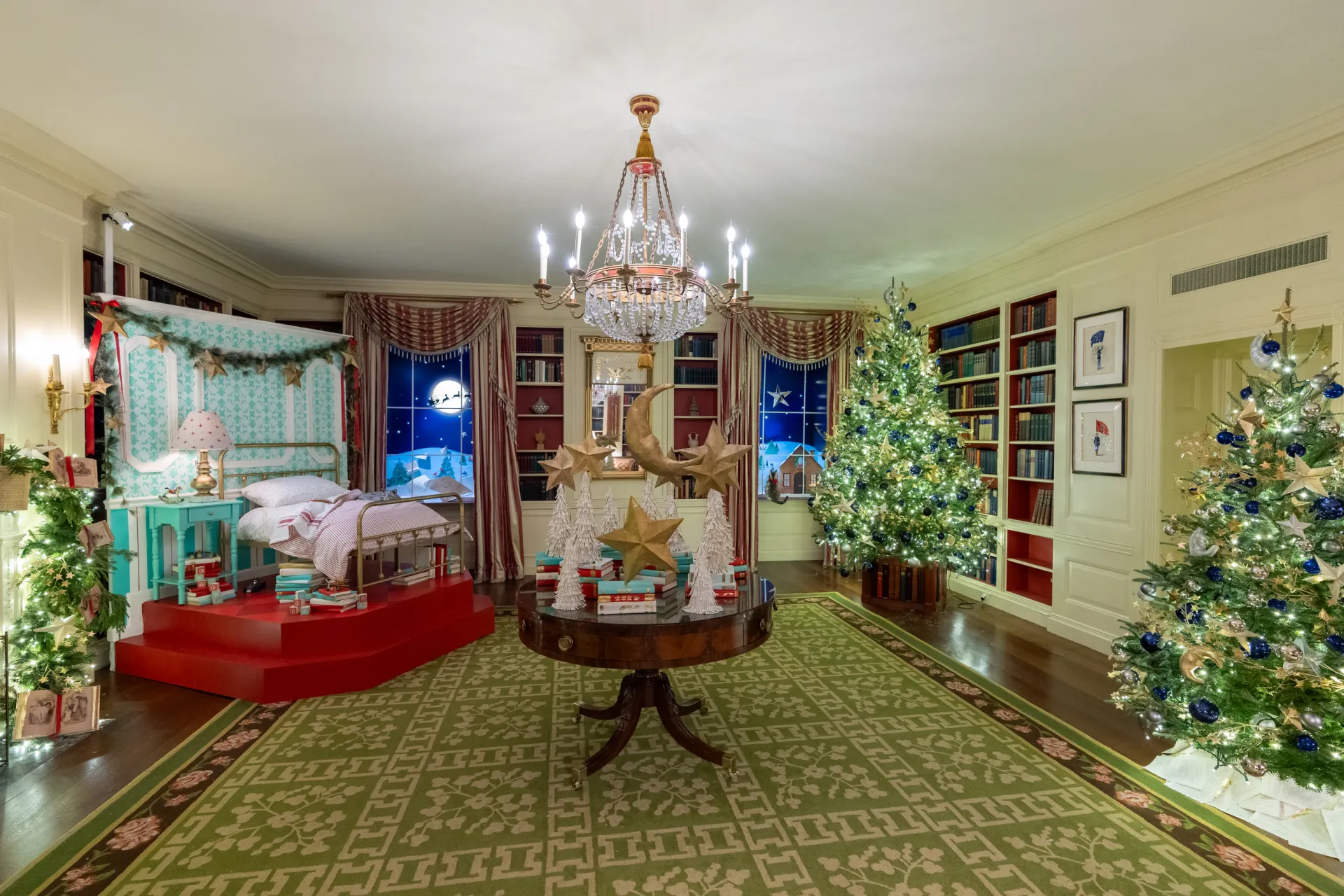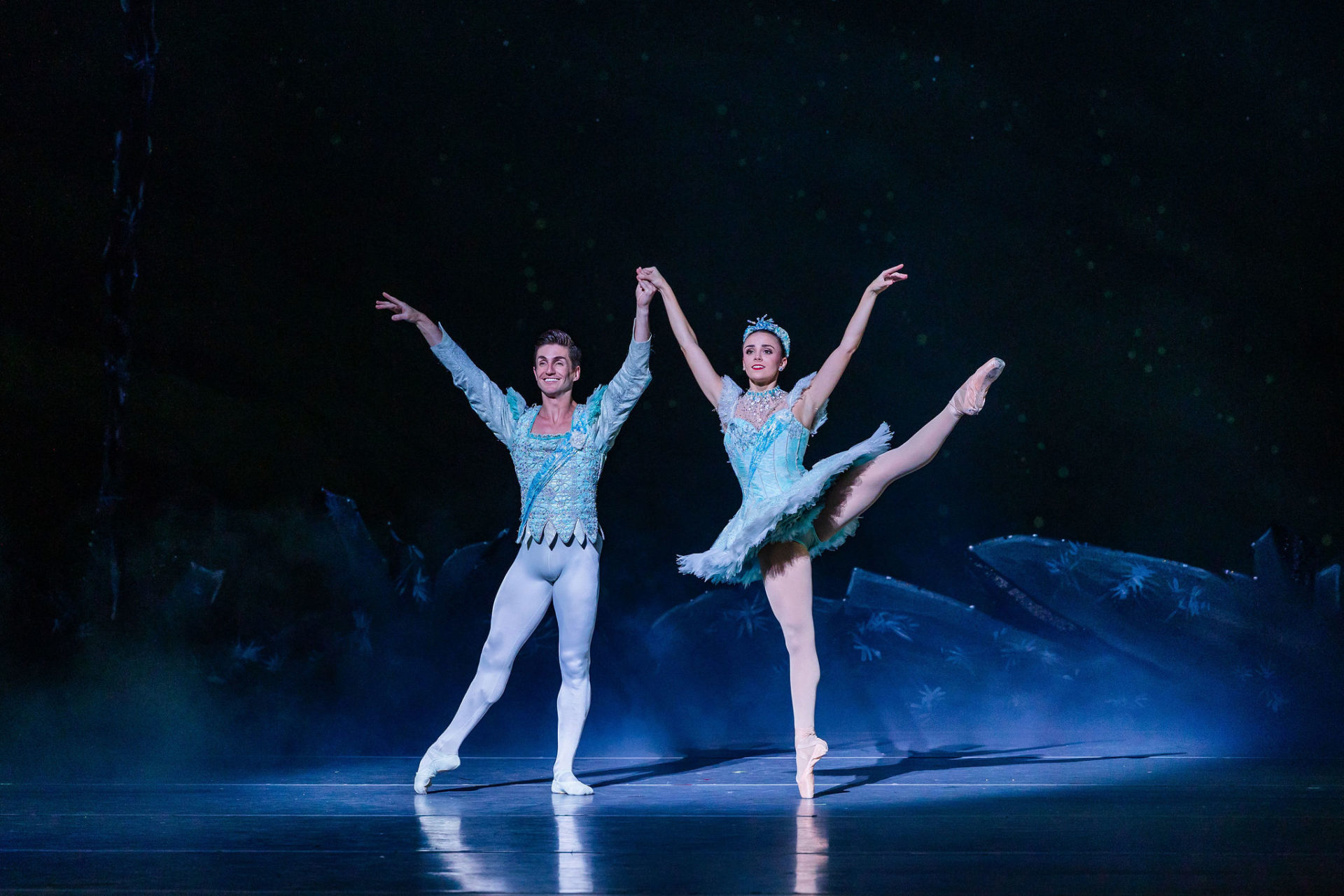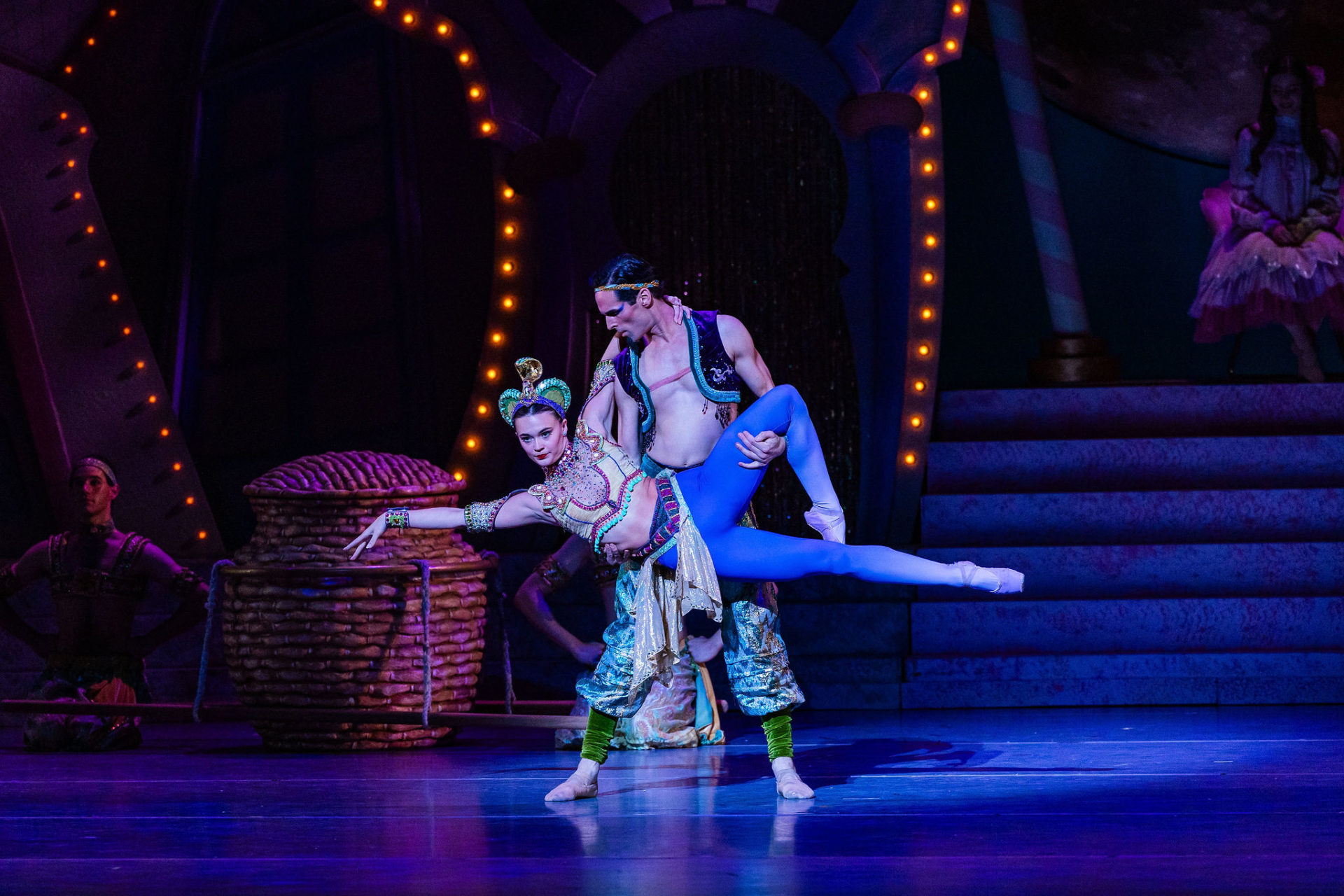From the Nashville Ballet
A Tale of Two Nutcrackers
The Nutcracker has been in the news lately. That’s unusual because this 19th-century masterpiece has been a staple of American holiday seasons for generations, remaining as part of the festive annual background decor. The tale of a young girl whose uncle introduces her to a fantasyland of treats from around the world is a perennial favorite. The use of both adults and children in short vignettes leaping from dancing flowers to fierce battles between mice and soldiers, to elegant duets regularly entrances dance lovers of all ages.
As part of the White House holiday celebrations, First Lady Jill Biden revealed a bright shiny take on Nutcracker selections incorporating specifically American elements. Those elements, jazz and tap dancing, fuse a variety of influences from the European and African continents, blended as only the USA can.

The theme of “Magic, Wonder, Joy” was encapsulated in a 2:25 video performed by Dorrance Dance, a New York-based tap dance specialty company founded by Michelle Dorrance. Along with Josette Wiggan, she choreographed six characters from the classic ballet cavorting among the decorations that included a gingerbread White House. The choreography was set to an exuberant jazz version of Tchaikovsky’s “Waltz of the Flowers,” from the Nutcracker Suite as arranged by American icons of Jazz, Billy Strayhorn and Duke Ellington and named with tongue firmly in cheek, “Danse of the Floreadores” (Toreador dance, get it?…LOL).
The White House décor, created by a host of volunteers and professionals supervised by Dr. Biden, made several references to an American literary classic. “A Visit from St. Nicholas,” the world-famous poem credited to New York-born writer Clement Clarke Moore is celebrating its second century of publication this year. Despite undeserved criticisms representative of the political hostilities currently infecting American society even in a time traditionally devoted to peace and love, the décor and dance proudly celebrated the best of our American melting pot.
I suppose something like this pride is what I expected from the Nashville Nutcracker, yet the references to Nashville were obscure, seemingly limited to images of Nashville landmarks, like the Stalbaum Hotel, on the scrim. Yes, there are references to the Parthenon Garden and the “Dew Drop” fairy (named after the famed Inn) in the program, but I didn’t see it on the stage. I’d thought the soldiers might be dressed in country music cowboy garb or perhaps a few American folk dance moves might have been incorporated among the wonderful danse caractéristiques of Act II. After all, Nashville is a global city.

It’s more than likely that I wouldn’t have been distracted by seeking Nashville attributions had they not been such a significant part of the advertising. Still, once it became clear they were unlikely to be found, it was time to settle in. The production was lovely, with brilliant costuming, and orchestral playing that easily shifted from elegant to rousing. The woodwinds, in particular, were at their best in the beautifully varied tone colors of Tchaikovsky’s composition.
Elements of Drosselmeyer’s magic were well-placed in the beginning, though the repetition of a trick with light, appearing and disappearing, was eventually a bit overdone. The sets and costumes glowed with magic and wonder, which was consistently supported by Scott Leathers’ effective lighting. The entire production was skillfully coordinated.
Aside from the magic tricks, other clever and charming moments performed by the Nashville Nutcracker Youth Cast, including baby mice scampering from the fireplace. The Snow Queen and King pas de deux was an extremely attractive example of classical ballet choreography, with Colette Tilinski and Nicolas Scheuer exuding elegance and control. The Waltz of the Flowers with costumes of green sepals and delicate pastel petals decorated Artistic Director Emeritus Paul Vasterling’s imaginative use of the floor space with graceful poses and the excellent coordination of the corps de ballet. One other area of progress: although the names are not online, a handout identified all the major roles and their performers.

The danse caractéristiques, thematic dances that consistently steal the show from generation to generation, stole the show. The contrast between “Tea” (danse chinoise) and “Coffee” (danse arabe) were highlights among the highlights. The use of elements of Beijing acrobatic performed by Aeron Buchanan and the lively 7-person dragon in the danse chinoise added theatrical authenticity, while the sensuous sinewy movements of Emily Ireland-Buczek, as a snake rising from a basket, lulled the audience into a sense of luxurious tranquility.
These kinds of contrasts were very well-paced so the audience was ready for the Autumn Tierney’s wacky Madame Bonbonniere vignette with its slapstick elements. Seeing the Youth Cast bonbon dancers in commedia dell’arte clown costuming appear in a seemingly endless line from under Sally’s dress was a delight, although it fell a bit flat with much of the audience.
FYI: the original character name, Mother Gigogne is a fictional character, a woman with many many children. Poupées gigognes is French for Russian nesting dolls. The renaming of the mother character here is appropriate given the original name of the fantasyland that Clara visits is Confiturenburg [Town of Candied Fruit].
For dance connoisseurs, the grande pas de deux after the Waltz of the Flowers is a treat worth waiting for and this performance did not disappoint. Lily Saito as the Sugar Plum Fairy and Garritt McCabe as her Cavalier danced with a captivating delicacy that belied the strength and mastery such a choreography requires. While most audiences enjoy the leaps and acrobatics, Nashville’s audience appreciated true skill even when clothed in subtlety. The entire production deserved all of the enthusiastic plaudits it received, helping prove that the Nutcracker, whether classic ballet in Nashville or classic jazz in DC will charm and delight for generations to come.



